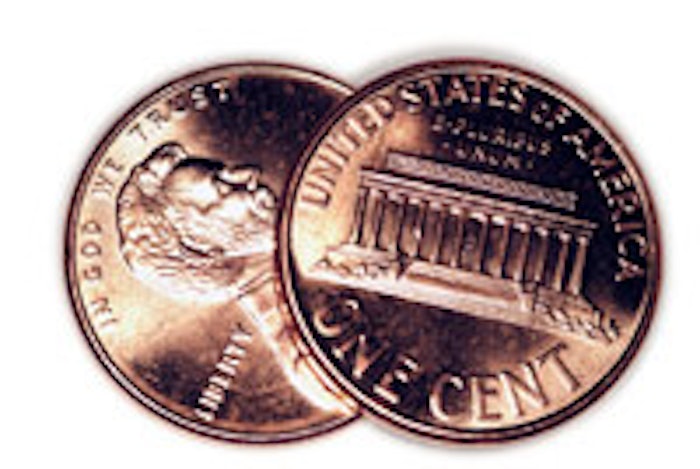
Abstract: Compensation is always a tricky issue for medical practices, but money might not always be the bottom line when it comes to rewarding your staff members. Find out what motivates them and work to make quality-of-life changes that may be as beneficial to them as money, such as making their work schedules more flexible. The six strategies listed in this article will help you navigate the seas of compensation and motivation for a happier, more driven staff.
During a time when the money tree hasn’t been as fruitful as in years past, many physicians have asked how to keep their staff members happy without breaking the bank. The ambiguity surrounding the dos and don’ts for paying personnel continues to make compensation structures one of the most challenging aspects of running a practice. After speaking with physicians from offices of all shapes and sizes throughout the country, the only clear rule is that there is no one clear rule.
When it comes to paying employees and keeping them happy, you can’t rely on a one-size-fits-all solution. Each practice and office has different strengths, weaknesses and personalities. The best model for success to keep your staff in harmony is to create a plan that is tailored to the dynamics of your practice.
Rethink rewards
The first step to developing a plan is to rethink your rewards system. As an employer, it is natural to assume people work solely for money, and if you cultivate an environment where they are purely driven by the almighty dollar, you will have employees who are only motivated by a paycheck. Rethink the idea of compensation, and instead consider quality-of-life initiatives you can offer your employees. Explore the following strategies, and see if a new idea or concept might help stretch your dollars and keep your staff smiling.
1. Motivation
Within a medical setting, various job duties generally attract a diverse group of personalities who are motivated differently. The first step to increasing job satisfaction is to identify what drives each of your employees. Typical human motivators can either be classified as intrinsic, such as wanting a feeling of satisfaction, desiring success or enjoying fulfilling a task; or extrinsic, such as a promotion, verbal praise or even punishment. Although some employees may only be motivated by a check, others work harder to gain a sense of social belonging, acknowledgment from supervisors or leadership opportunities. Some are driven by the opportunity to conquer a challenge as opposed to needing a strict incentive plan. Once you classify what it is that motivates each employee in your office, you can better cater a compensation and bonus structure to align with their goals.
2. Communication
What is more precious than money? The answer is different for each person, and this is a question employers seldom ask. After facilitating an employee satisfaction survey for a practice, one doctor was surprised to see that, when asked what would make each employee’s job more enjoyable, not a single one listed a raise. Each wrote something that was personal to them that the physician had never considered. One employee explained that her start time of 8:30 am made it challenging to drop off her son, and get to work on time. She arrived stressed every morning because of the pressure to beat the clock. She said if she could start 30 minutes later and stay 30 minutes later, it would drastically increase her quality of life. From this exercise, it was discovered how inexpensive it can be to enhance an employee’s job satisfaction. Institute an annual survey asking employees to list three nonfinancial items that could increase their job satisfaction, and then work to implement reasonable suggestions.
3. The rich doctor rumor
If you don’t explain to your staff members that the $400 a patient pays for a Botox treatment doesn’t go straight into your wallet, they won’t see it any other way. Encourage employees to think twice before ordering supplies and to be less wasteful by making your expenses and overhead visible. Some practices post a chart of monthly expenses and others have monthly meetings to review overhead. See Monthly Expenses Chart. By showing your staff members how the economy and overhead affect your business, you can help motivate them to keep expenses down and to stop looking to you as an endless supply of cash and credit cards.
4. Pay for performance
It is imperative to the growth of your practice that your staff members know that their daily efforts and contributions are directly linked to what they take home. Whether by instituting a grading system (See Employee Grading Scale) or using a formula, such as revenue generated or number of patients converted (See Potential Profitability), a great way to keep a bounce in your staff members’ steps is to track their performance and reward them accordingly.
The best way to implement a pay or bonus system based on performance is to clearly explain the criteria to employees and hold reviews two to three times a year so they have an idea about how they are performing. Determining a potential raise or a bonus, no matter how small, based on a staff member’s performance is a great way to ensure everyone is working toward a common goal of keeping the practice running smoothly and generating revenue.
5. Motive + action = motivation
Setting goals may seem like a rudimentary activity; however, this simple task can have a tremendous impact on your staff. By setting goals, you are giving a staff member something to work toward. Motivation can be broken down into finding a motive, and then deciding which actions are necessary to achieve the desired outcome. The action you want to achieve becomes your goal. Have your staff annually submit its short-term and long-term goals, and track what is being done to achieve them during reviews.
An effective way to keep your team members on track throughout the year is to encourage them to use passwords that reinforce their goals, so when they start their day by logging into their e-mail, they are automatically reminded of what they are working toward. For example, a receptionist who has a goal of being more approachable with patients might use the word “smile” as her password.
6. Cutting staff vs. salaries
As many physicians have recently experienced, difficult financial times mean you often have to make difficult decisions. The choice to downsize staff versus cutting salaries has to be made based upon what is right for your practice. Beware of the side effects each decision could bring to overall staff productivity and morale. Generally, when you ask staff members to continue their jobs for less pay, you are setting those employees up for failure because it will become challenging for them to stay motivated. Good employees should be thought of as investments for the practice, and when times are tough, it might prove beneficial to ask a strong employee to take on a few more responsibilities rather than taking a pay cut.
Give your team a “raise”
Ralph Waldo Emerson once said money often costs too much. Creating an atmosphere where your staff is only driven by the dollar will make weathering financial storms difficult. Use the recent financial climate as an opportunity to restructure your reward and motivation efforts. By communicating with your staff members and learning what motivates them individually, you may be surprised to discover how little it costs to give their jobs a “raise.”










